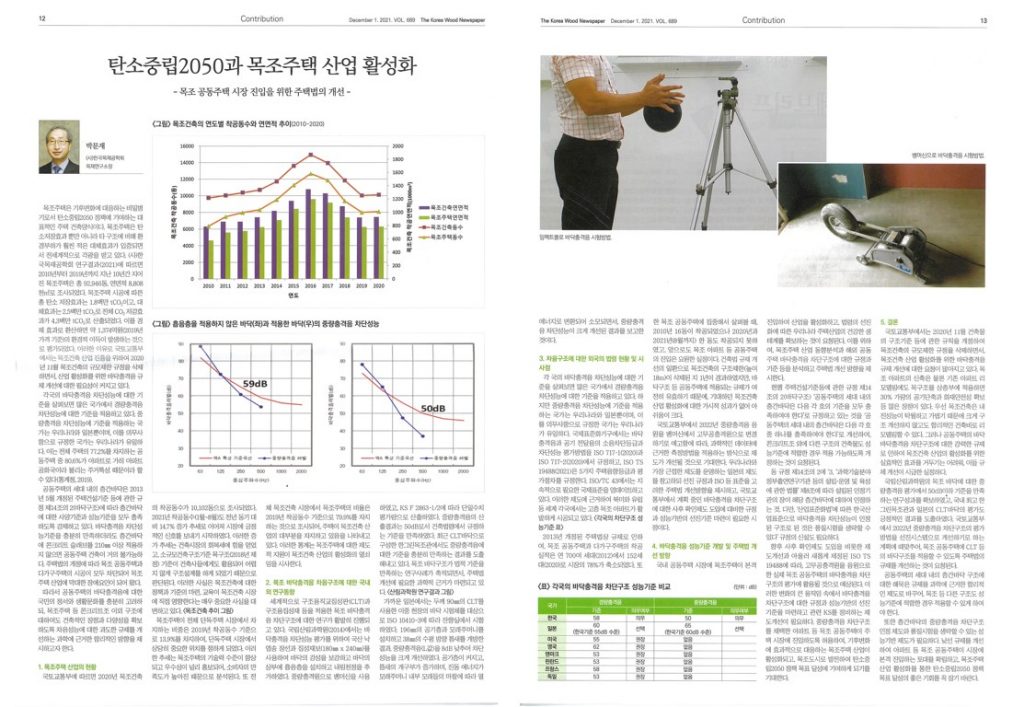Recent Research Supports the Use of Wood Joist Floor Systems in Korean Multifamily Construction
Since 2017, the Korean government has imposed a ban on non-concrete floor systems in all multifamily residential buildings due to concerns regarding sound performance. This decision closed the door to what had been an active sector using the Canadian wood floor joist systems forDagagu housing and low-rise multifamily construction.
In Korea, anxiety about the effect of floor impact generated sound has been increasing, along with the number of civil complaints. Unlike many other countries where only light impact sound transmission is regulated, Korean building authorities also regulate heavy impact sound using a robust ‘bang machine’ as the test impact source. This has partially contributed to the elimination of non-concrete floors.

Canada Wood Korea has been working with the Korean Society for Wood Science & Technology (KSWST) to conduct research and testing to support future advocacy to modify the current housing act to reinstitute the use of wood floors. Dr. Moon Jae Park, KSWST consultant, published a technical research article in the Korea Wood Newspaper on Dec 1, 2021 that highlighted the equivalent performance of wood floor system to the non-wood ones. He also compared the building codes and standards and research findings from various regions to support this conclusion. In his paper, he made a couple of key suggestions, amongst which included the adoption of certified performance-based impact sound mitigation and the use of the standard rubber ball as impact test source which is more similar to a human impact than the reverberation of a banging machine. , Addition of these amendments would enable the wood joist floor system to be allowed in multifamily housing.

Canada Wood Korea will continue exploring and addressing this issue with key stakeholders in South Korea’s building sector.
Targeted key stakeholders include the Korea Institute of Civil Engineering and Building Technology (KICT) and the Ministry of Land, Infrastructure and Transport (MoLIT), the Korean Society of Wood Science and Technology (KSWST), the Korea Forest Service (KFS), the National Institute of Forest Science (NIFoS) and the Korean Wooden Architecture Policy Forum (KWAPF).


